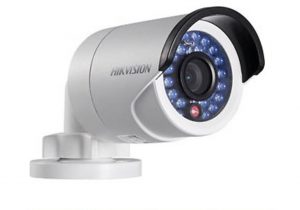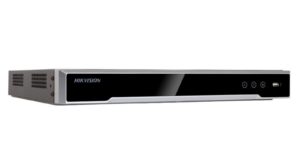 Surveillance camera systems have been flooding the commercial and residential market at all price points and quality levels. How do you decide which camera system is the right one for your situation?
Surveillance camera systems have been flooding the commercial and residential market at all price points and quality levels. How do you decide which camera system is the right one for your situation?
The obvious answer is that you should come to The Little Guys for expert advice!
But first, let’s discuss why you should purchase a surveillance camera system in the first place.
In both commercial and residential applications, surveillance cameras can actually deter crimes before they occur. For instance, a restaurant owner can monitor their cash register or stock room, and a homeowner can monitor a package left on their porch or the access door to their garage.
There are many more reasons, but you get the idea.
Where to start? It can be a daunting task to figure out what options you need in a successful camera system. You don’t want to find out your system isn’t what you need after you have something happen. It needs to be right from day one. Let’s take a look at some of the key options you will need to consider when planning a camera system.
Hardwired or Wireless:
From a performance standpoint, cameras that are hardwired have a more stable signal and are less prone to interference from nearby devices. Hardwired cameras do not buffer from poor WiFi signals. They also don’t require batteries for power, freeing you from changing batteries (which can add up in cost over time) or having to recharge them every few days…
Resolution:
What are you expecting to see with your camera? Are you just looking to see who is at your door or is it important to see clear facial features from someone walking up to your driveway? The better the camera the better the clarity, definition, and color quality are. Resolution is usually rated in Megapixel. In today’s world a 1.3-3MP camera is the entry-level resolution, and cameras up to 6-8 Megapixel are becoming more common. Megapixel is only one part of the story however, as low-quality cameras can still have high Megapixel ratings, but their optics and lens system can be sub-par leaving you with a disappointing picture. Thorough expert evaluation of an area can dictate what resolution camera is necessary to do the job.
Night Vision:
Camera resolution and color tend to get worse as it gets darker outside. Unless you want a floodlight turning on every time your camera senses motion, a camera with excellent low light viewing is what you want. Some cameras will automatically switch to black and white in low light to maintain a usable image. Others use IR illuminators to light up the image to see in the dark, still in black and white though. There are great cameras available that can see in full color in the darkness with some pretty amazing technologies, they are more expensive but if it is the right camera for the job then that is what it takes.
Tracking and Motion:
Today’s cameras can be set up with motion detection and even intelligent tracking. On the more basic side, areas in a picture can be set up to trip a motion alarm within the camera. This alarm can start the recorder recording and even send an email. This is a great way to save on storage space for recording, only recording when motion zones are tripped. Advanced systems can actually track objects and people in an area, and can even communicate with other cameras on the system to track with them. Intelligent pan-tilt-zoom (PTZ) cameras can replace multiple fixed cameras in some situations for a cost-saving and better result.
 Content Backup:
Content Backup:
There a few different ways to backup the content accumulated by your camera system.
Some companies offer a monthly service fee to record content for you and make it available if you need to retrieve it. Others offer recorders that you purchase and are installed in your home or office as part of the Surveillance System. Once you purchase the recorder there are no monthly fees, and you can access the content whenever you want. Different sized hard drives are available depending on the amount of recording time you require.
Watching the system:
Ok, so you have the right cameras figured out, now how do you see them? There are several common ways cameras can be viewed. Almost all systems today have access through a smartphone or tablet app. Some can be viewed on a desktop computer. With a proper control system in your house, you may even be able to view on your TV’s around the house or business. Before you decide on what system you are going with, figure out the way(s) you want to be able to view it, so later you know you can!
There are more considerations, depending on the application that can be covered in greater detail during a consultation, but this is a basic overview of how a surveillance camera system can give you security in knowing you are getting the best security camera system for your project.
